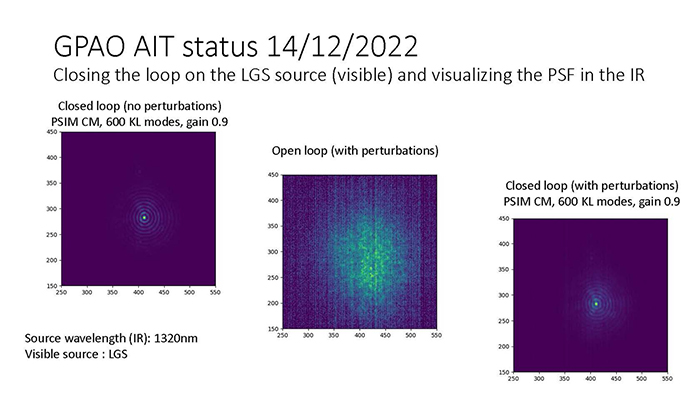The success of the GRAVITY interferometric instrument on the Very Large Telescope Interferometer (VLTI), in particular with results of the confirmation of general relativity in strong regime which it provided on the black hole of our galaxy, SgrA*, led to the start of a project of instrumental and infrastructure improvements in order to extend this level of performance to the field of the exoplanets (high contrast adaptive optics) and to extragalactic astrophysics (laser guide stars) ; it is the GRAVITY+ project and mainly concerns the improvement of the performance of the adaptive optics of the VLTI. The Gravity+ consortium, composed of MPE, CNRS (through LESIA, IPAG, Lagrange & CRAL), MPIA, University of Cologne, CENTRA laboratory, Southampton University as well as ESO, has been working for 3 years on the design and the realization of 4 identical adaptive optics systems which will replace the MACAO systems, more than 20 years old. MPE is the prime contractor and responsible for the manufacturing of the wavefront sensors for natural and laser guide stars; LESIA is in charge of the realization of the real time computer and IPAG, in collaboration with ALPAO are developing the wavefront correction device (deformable mirror with 41x41 actuators). OCA is in charge of the integration of these components on an optical bench which reproduces the VLT's Coudé beam.

During a busy period in the last quarter of 2022, the system has been assembled in a clean room in the Fizeau building, and with the support of ESO and LESIA, the adaptive optics loop was closed on artificial turbulence! This is an important step for any adaptive optics system, and even if there are still optimizations and secondary loops to finalize, we can start the year 2023 with the confidence of an established success for this ambitious instrument !
Contacts
Florentin Millour - florentin.millour@oca.eu
Philippe Berio - philippe.berio@oca.eu






